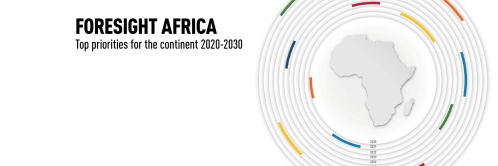On January 8, the Africa Growth Initiative at Brookings released its annual Foresight Africa publication. This year’s report, a special edition, focuses on six priorities for the next decade. The second chapter, Deepening good governance: Inclusion, democracy, and security, focuses on inclusive governance for development, closing the gender gap in labor force participation, and security megatrends.
In his viewpoint, Andinet Woldemichael highlights potential gains from increasing women’s labor market participation and proposes policies that can support this goal. According to Woldemichael, by increasing participation to the same rate as advanced economies, Africa would gain 44 million more labor market participants. The potential economic gains differ based on current participation rates and range from 1 percent in Senegal to almost 50 percent in Niger (Figure 2.4).
Woldemichael identifies empowering women in the informal sector and escaping the “middle dip” in labor force participation as policy areas worth African governments’ focus for their lasting impacts for all household members and Africa’s economy at large. Given the large informal sector in Africa, he recommends focusing on gender parity in pay and improving protections for women in the short term while creating opportunities for them to transition to the formal sector in the long run.
In his piece, Woldemichael examines trends in women’s labor force participation, particularly the “middle dip” in the female labor force participation rate as income per capita rises (Figure 2.3). As seen in the figure, at extremely low levels of income, women work at the family farm or in household enterprises. As the country develops, women enter the labor market. Then, as the economy advances and family incomes rise, the family “buys” back women’s time for home production, such as to care for children or the elderly. To encourage women’s continued participation in the labor force, the author recommends increasing access to affordable care for children and the elderly, which would allow women to participate more in the labor market.









Commentary
Figure of the week: Economic gains from increasing female labor force participation in Africa
January 29, 2020